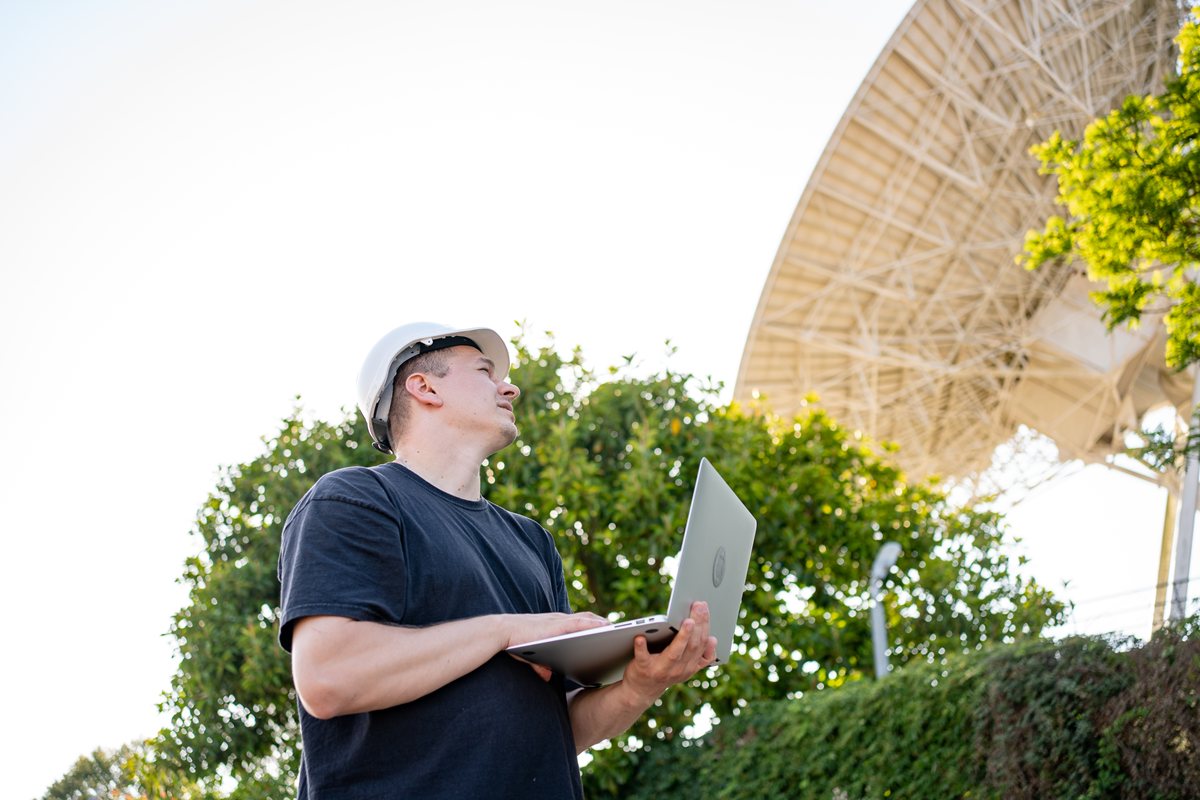
Understanding GNSS in Topographic Surveying: Accuracy at Scale
November 18, 2025 1:37 pmTopographic surveys are the backbone of accurate design, planning, and construction. For professionals working across infrastructure, civil engineering, and land development, precision is vital. While traditional surveying instruments such as total stations remain crucial, the increasing use of GPS in land surveying has transformed workflows by enabling surveying at scale with centimetre‑level accuracy.
This article explores GNSS in topographic surveying, explaining how satellite positioning systems deliver efficient, accurate, and large‑area mapping solutions. We’ll examine advantages, limitations, applications, and how Castle Surveys integrates GNSS technology into industry‑leading workflows for infrastructure, commercial, and public projects.
What Is GNSS and How Does It Work in Surveying?
GNSS (Global Navigation Satellite Systems) refers to the constellation of satellites that transmit positioning signals to a receiver on Earth. While GPS (the U.S. Global Positioning System) is the most widely recognised, other systems such as GLONASS (Russia), Galileo (Europe), and BeiDou (China) expand global coverage and improve reliability for surveyors.
Survey‑grade GNSS receivers track multiple satellite signals simultaneously. By calculating the time it takes for signals to travel from satellite to receiver, distances are derived, and the receiver’s position is determined. However, raw satellite data is not accurate enough for surveying-uncorrected coordinates can be out by several metres.
To achieve survey‑level precision, surveyors use:
RTK (Real Time Kinematic) Corrections – Providing centimetre‑level accuracy by transmitting corrections from a base station or network service directly to the rover receiver in the field.
Post‑Processed Kinematic (PPK) Data – Field data is logged and processed against static base station data later, often used where real‑time corrections aren’t practical.
This combination of systems ensures that GPS for land surveyors delivers both the speed and accuracy needed for modern topographic surveys.
REQUEST A QUOTE FOR A GNSS SURVEY
The Advantages of Using GNSS for Topographic Surveys
Efficiency Over Large Areas
One of the most significant benefits of GNSS in topographic surveying is efficiency in mapping large or linear sites. Traditional total stations require line of sight between instruments and survey points, which becomes time‑consuming on long stretches such as highways, rail corridors, or pipelines.
By contrast, GNSS works directly with the satellite network, allowing surveyors to collect accurate points quickly across open ground. This reduces fieldwork time and accelerates project delivery-an essential advantage for civil engineering and infrastructure projects where deadlines are tight.
For example, mapping a 5 km road corridor with a total station might take several days due to multiple setups and traverses. With GNSS, the same work can be completed in a fraction of the time without compromising accuracy.
High Accuracy with RTK and Network Corrections
Contrary to misconceptions, GNSS is not limited to “rough” positioning. With RTK corrections, receivers can achieve centimetre‑level accuracy in real‑time, suitable for boundary definition, construction setting‑out, and detailed topographic data capture.
When using a national correction service or a well‑established local base station, surveyors obtain immediate reliable coordinates without the need for dense ground control networks. This is particularly valuable in rural and semi‑urban areas where control points may be sparse but high accuracy is still required.
Seamless Integration with Other Survey Techniques
GNSS does not replace other surveying technologies; instead, it complements them. For many projects, a hybrid workflow ensures the best combination of speed, accuracy, and comprehensiveness.
When combined with 3D Laser Scanning Surveys, GNSS is used to georeference point clouds, ensuring datasets are aligned to national grid coordinates and height systems.
In Drone Surveys, GNSS ground control points validate aerial datasets, improving the accuracy of photogrammetry and LiDAR outputs.
Total stations remain vital for detailed site features and areas with limited satellite visibility, but GNSS provides the framework for overall control and wide‑area data.
This integration ensures that data from different sources is consistent, scalable, and ready for CAD or BIM environments.

Accuracy Considerations and Limitations
While GPS in land surveying offers significant advantages, surveyors must understand and manage limitations to ensure data quality.
Multipath Errors – Signals reflecting off buildings, vehicles, or trees can distort readings. High‑quality receivers with multipath rejection software reduce this risk.
Satellite Visibility – Accuracy depends on the number and geometry of visible satellites. In urban streets or dense woodland, positioning may degrade.
Atmospheric Interference – Variations in the ionosphere and troposphere slow signal propagation, introducing errors if not corrected.
To mitigate these challenges, surveyors apply best practice protocols such as:
Establishing base stations and control points to verify GNSS data.
Running redundant observations and cross‑checks with total stations.
Incorporating robust quality control processes to identify and eliminate suspect readings.
Ultimately, understanding limitations ensures that GNSS is applied appropriately and delivers dependable results.
Why Castle Surveys Trusts GNSS for Large‑Scale Projects
At Castle Surveys, we deploy survey‑grade GNSS equipment across a wide portfolio of projects, from commercial developments to complex infrastructure & highways schemes. Our expertise allows us to harness the efficiency and accuracy of GNSS while integrating it seamlessly with total stations, laser scanning, and drone mapping.
Key reasons we trust GNSS in topographic workflows include:
Industry Expertise – Our surveyors have extensive experience managing GNSS‑based survey control and data integration across diverse project environments.
Advanced Equipment – Using the latest multi‑constellation receivers ensures reliability, even in challenging conditions.
Quality Assurance – Every dataset undergoes accuracy verification against control points and complementary technologies.
Proven Results – From highway junction mapping to large‑scale land development, GNSS has enabled us to deliver accurate data at pace, helping clients meet design and construction timelines.
For local authorities, consultants, and developers, this means confidence that survey deliverables are precise, consistent, and aligned with national standards.
Conclusion
As the demand for large‑scale, high‑precision spatial data grows, GPS in land surveying has become indispensable. By enabling fast, accurate positioning across wide areas, GNSS ensures that surveyors can operate efficiently without sacrificing quality. When coupled with RTK corrections, total stations, laser scanning, and drone mapping, GNSS provides the foundation for delivering reliable survey data.
Castle Surveys is proud to integrate GNSS in topographic surveying across our workflows, ensuring clients benefit from speed, scale, and accuracy in every project.
Need accurate site data at scale? Speak to Castle Surveys about GNSS‑enabled topographic surveys for your next project.
This post was written by Paul Jackson

Comments are closed here.